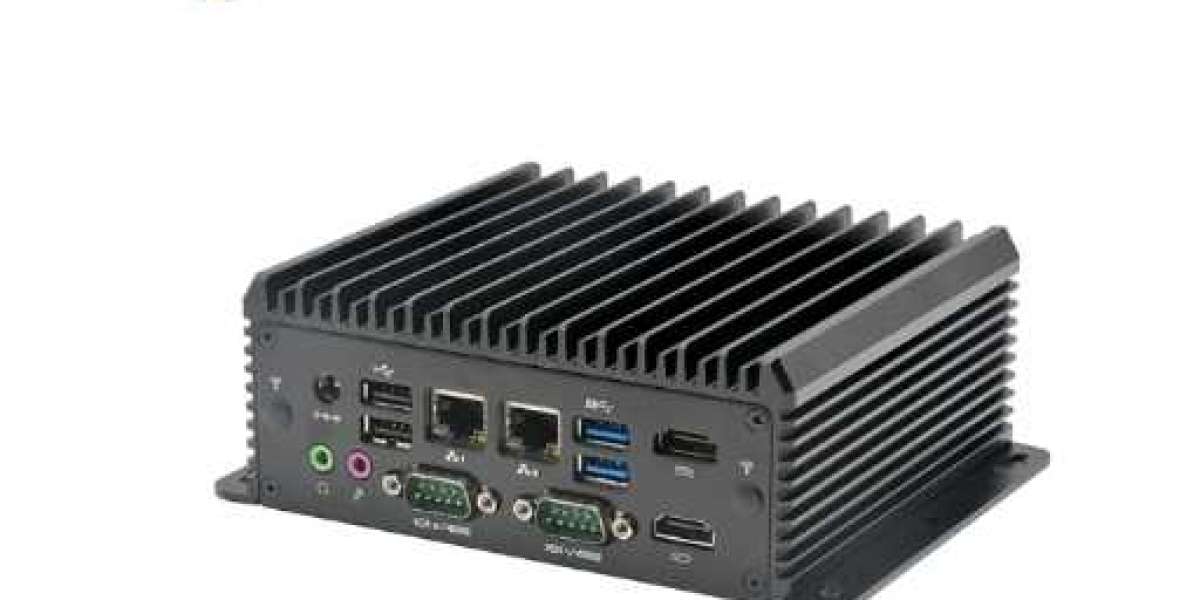Embedded computers are integral to a wide range of applications, from consumer electronics to critical infrastructure systems. As their usage expands, so does the importance of securing these systems against various threats. This article delves into the architecture of embedded computers, the unique security challenges they face, and the strategies for safeguarding data and systems effectively. Additionally, we will highlight how YENTEK® provides robust embedded computer solutions tailored for enhanced security.
Understanding Embedded Computers
Embedded computers are specialized systems designed to perform dedicated functions within larger mechanical or electrical systems. They differ from general-purpose computers in that they are optimized for specific tasks, which can include anything from controlling household appliances to managing complex industrial processes.
Key Characteristics
Task-Specific: Embedded systems are built for particular applications, leading to enhanced efficiency.
Resource Constraints: Many embedded systems operate under strict limitations regarding processing power, memory, and energy consumption.
Real-Time Operation: Many applications require immediate responses, making real-time performance crucial.

The Security Landscape for Embedded Systems
As embedded computers become more prevalent, they also become attractive targets for cybercriminals. The security landscape is marked by numerous challenges:
Unique Security Challenges
Insecure Network Connectivity: Many embedded systems connect to networks for communication or remote management, increasing vulnerability to network-based attacks.
Resource Limitations: Limited processing power and memory can hinder the implementation of robust security measures.
Third-Party Components: The use of external hardware and software components can introduce vulnerabilities that are difficult to manage.
Long Lifecycle: Embedded systems often have long operational lifespans, during which security updates may be neglected.
Best Practices for Securing Embedded Systems
To enhance security in embedded systems, a multi-faceted approach is necessary. Here are some best practices:
1. Implement Strong Authentication and Authorization Mechanisms
Authentication is critical in ensuring that only authorized users can access embedded systems.
Multi-Factor Authentication (MFA): Adding an extra layer of security by requiring multiple forms of verification helps prevent unauthorized access.
Role-Based Access Control (RBAC): By granting different privilege levels based on user roles, organizations can minimize the risk of unauthorized access to sensitive functions.
2. Utilize Address Space Layout Randomization (ASLR)
ASLR is a technique that randomizes memory locations where data and functions are stored. This makes it difficult for attackers to predict where vulnerabilities exist, thus enhancing overall system security.
3. Leverage Trusted Execution Environments (TEEs)
TEEs provide a secure area within an embedded system’s processor where sensitive data can be processed without interference from other processes. This isolation protects critical operations from potential threats.
4. Adopt Containerization Techniques
Containerization isolates software components within an embedded system, limiting the impact of potential breaches. By encapsulating applications in containers, organizations can apply security measures at the container level and reduce lateral movement within the system.
5. Choose a Secure Embedded Operating System
The operating system plays a crucial role in overall system security. Selecting an OS with built-in security features such as secure boot and access controls is essential for mitigating vulnerabilities.

Security by Design
Integrating security measures from the earliest stages of development is vital for creating resilient embedded systems. This principle emphasizes:
Minimizing Attack Surfaces: Reducing unnecessary functionalities limits potential vulnerabilities.
Secure Default Settings: Ensuring that systems are secure out-of-the-box prevents users from inadvertently exposing them to threats.
Rigorous Testing and Validation: Conducting thorough testing throughout the development cycle helps identify and address potential security issues before deployment.
Hardware Security Measures
In addition to software strategies, hardware-based solutions can significantly enhance embedded system security:
1. Trusted Platform Module (TPM)
A TPM is a dedicated microcontroller designed to secure hardware by integrating cryptographic keys into devices. It provides benefits such as:
System Integrity Checks: Ensures that the system has not been tampered with.
Secure Storage: Protects sensitive information such as passwords and cryptographic keys.
2. Hardware Security Tokens (HST)
HSTs create a self-contained secure environment for cryptographic operations and data protection. They serve as a robust defense against physical attacks on embedded systems.

Power Management Techniques for Enhanced Security
Efficient power management not only conserves energy but also contributes to overall system security:
Sleep Modes: Implementing low-power states when idle reduces exposure to attacks.
Dynamic Voltage Scaling: Adjusting power usage based on workload can help mitigate risks associated with power fluctuations.
YENTEK® Solutions for Enhanced Security
YENTEK® specializes in providing high-quality embedded computers designed with robust security features tailored for various applications across industries. Their products incorporate advanced technologies that address the unique challenges faced by embedded systems:
Integrated Security Features: YENTEK®'s embedded computers come equipped with built-in security protocols such as secure boot processes and hardware-based encryption.
Customizable Solutions: Offering tailored solutions allows clients to implement specific security measures based on their operational needs.
Regular Updates and Support: YENTEK® ensures continuous support and updates for their products, helping clients maintain optimal security throughout the lifecycle of their embedded systems.

Future Trends in Embedded System Security
As technology evolves, so too will the strategies for securing embedded systems:
1. Increased Focus on IoT Security
The rise of IoT devices has expanded the attack surface for embedded systems, necessitating more robust security protocols tailored specifically for connected environments.
2. Integration of AI in Security Measures
Artificial intelligence can enhance threat detection capabilities by analyzing patterns and identifying anomalies in real time, allowing for proactive responses to potential breaches.
3. Continuous Monitoring and Updates
Regularly updating firmware and software is essential for addressing newly discovered vulnerabilities and ensuring ongoing protection against emerging threats.
Conclusion
The importance of enhancing security in embedded computers cannot be overstated as they play critical roles across various industries. By understanding their unique challenges and implementing best practices—ranging from strong authentication mechanisms to hardware-based solutions—organizations can safeguard sensitive data and ensure reliable operation.
YENTEK® stands out as a provider committed to delivering secure embedded computing solutions that meet the evolving demands of today’s technological landscape. By adopting a "security by design" approach, YENTEK® ensures that their products not only meet current needs but also adapt to future challenges in an increasingly interconnected world.
As we move forward into an era dominated by smart devices and IoT applications, prioritizing embedded system security will be essential not only for protecting individual devices but also for maintaining trust in the broader technological ecosystem.
Understanding the Architecture and Components of Embedded Computers








